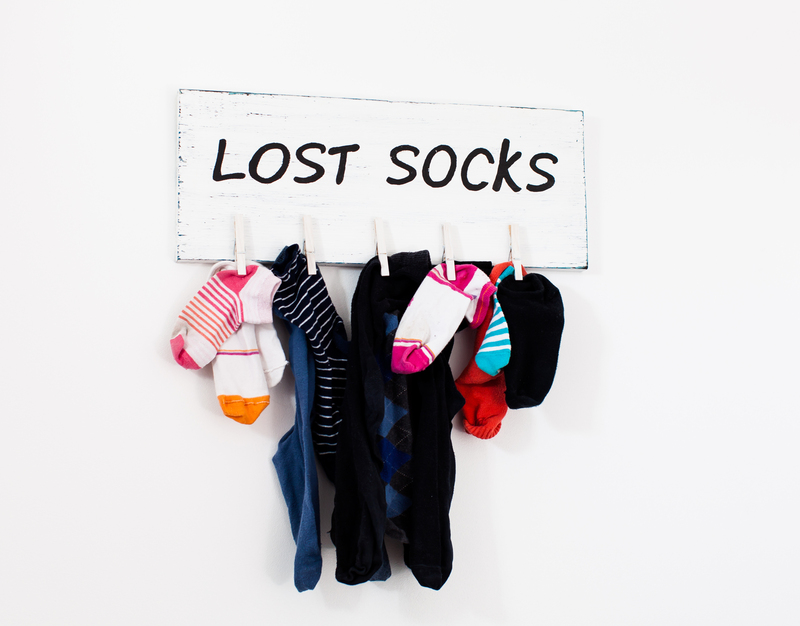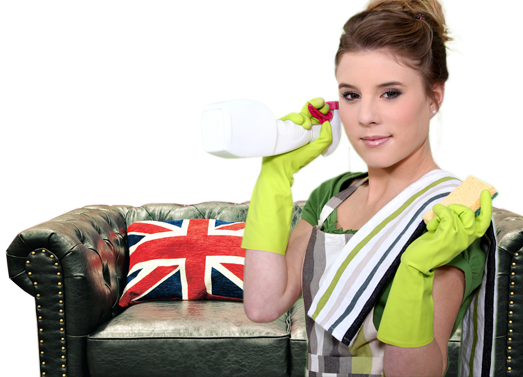Revitalize Your Stovetop: Tips to Clean Burnt-On Residue
Posted on 01/10/2025
Revitalize Your Stovetop: Tips to Clean Burnt-On Residue
Keeping your kitchen clean is an ongoing task, and the stovetop is one area that often bears the brunt of everyday cooking. Burnt-on residue, spills, and stubborn grease can make even the tidiest kitchen look neglected. If your stovetop has lost its shine, it's time to give it the attention it deserves. Fortunately, with the right techniques and tools, you can revitalize your stovetop and restore its sparkle. In this detailed guide, discover tried-and-true methods for cleaning burnt-on messes, preventing future buildup, and maintaining a gleaming cooking surface.
Why Cleaning Burnt-On Residue Matters
Whether you're working with a gas, electric, or ceramic stove, frequent use inevitably leads to food splatters and grease spillovers. Burnt-on stains are not only unsightly--they can also:
- Affect the taste and aroma of your dishes as old food residues produce unpleasant smoke and odors.
- Reduce heating efficiency by creating a barrier between the burner and your cookware.
- Promote bacterial growth and potentially compromise kitchen hygiene.
- Accelerate wear and tear on your stovetop, jeopardizing its longevity and performance.
Therefore, regularly cleaning your stovetop and removing cooked-on residue isn't just about appearances--it's a crucial step in maintaining a safe and efficient kitchen.

Understanding Your Stovetop: Types and Their Cleaning Requirements
Not all stovetops are created equal. Each stovetop type--be it gas, electric coil, glass-ceramic, or induction--comes with its own considerations for cleaning burnt-on grime.
Gas Stovetops
Gas stoves feature removable grates and detachable burner caps, which can accumulate debris quickly. It's important to take apart these elements for a thorough clean.
Electric Coil Stoves
Electric coil stovetops have exposed heating elements. Often, drip pans underneath collect excess spills and food particles, becoming notorious for stubborn, charred deposits.
Glass and Ceramic Stovetops
These smooth surfaces look sleek but are prone to visible stains and scratches if not cleaned with care. Special non-abrasive tools and solutions are often required.
Induction Stovetops
Induction surfaces are similar to glass-ceramic stoves. They demand gentle, non-scratch cleaning methods to avoid causing surface damage while eliminating burnt-on spots.
Essential Tools and Materials for Stovetop Cleaning
To clean your stovetop efficiently, assemble the right cleaning arsenal. Here's what you'll need:
- Soft microfiber cloths or non-abrasive sponges
- Non-scratch scrubbing pads
- Baking soda: a natural, gentle abrasive
- White vinegar: effective for degreasing and dissolving mineral deposits
- Mild dish soap
- Plastic or wooden spatula: for safely scraping off residue
- Old toothbrush: great for cleaning tight spaces
- Spray bottle (for vinegar solution)
- Commercial cooktop cleaner (optional for glass tops)
- Razor blade scraper (for stubborn residue on glass only)
- Gloves: to protect your hands
Step-By-Step Guide: How to Clean Burnt-On Stovetop Residue
Step 1: Safety First
Always ensure the stovetop is completely cool and turned off before cleaning. Unplug electric stoves if possible, and remove any grates or burners that can be taken off.
Step 2: Remove Loose Debris
Wipe away any loose crumbs, debris, or food particles with a dry microfiber cloth or paper towel. This prevents spreading grime during scrubbing.
Step 3: Soften Burnt-On Residue
For the toughest, burnt-on residue, pre-soaking is key:
- Sprinkle a generous layer of baking soda over the affected spots.
- Spray or pour white vinegar over the baking soda. The reaction will fizz and help lift the caked-on mess.
- Let the mixture sit for 15-30 minutes to loosen stubborn stains.
For removable parts (grates and burner caps), let them soak in hot, soapy water for at least 20-30 minutes before scrubbing.
Step 4: Gentle Scrubbing
Use a non-abrasive sponge or soft-bristled brush to gently scrub the loosened residue. For glass-ceramic tops, avoid harsh scouring pads, which may scratch the surface.
- Wipe in a circular motion for best results.
- For especially stubborn burnt-on bits, use a plastic or wooden spatula to gently lift the debris. Never use metal utensils on glass!
- If necessary, add a bit more baking soda and repeat the process.
Step 5: Use a Razor Scraper (Glass Tops Only)
For electric or induction glass tops, a razor blade scraper can carefully remove persistent, burnt-on gunk. Hold the blade at a 45-degree angle and scrape gently to avoid scratching.
Step 6: Clean and Degrease with Vinegar
After removing the thick residue, spray the stovetop with a solution of equal parts white vinegar and water. This not only cuts through lingering grease but also leaves a streak-free finish.
Step 7: Final Wipe Down
Rinse the surface with a damp, clean cloth to remove all cleaning residues. Dry with a fresh microfiber towel for a polished result.
Step 8: Reassemble and Shine
Once all components are dry and clean, reassemble your stovetop. For added shine on glass or ceramic surfaces, buff them with a bit of commercial glass cooktop cleaner and a soft cloth.
Natural vs Commercial Cleaners: What Works Best?
Home remedies, such as baking soda and vinegar, are trusted for their safety, effectiveness, and eco-friendliness. However, commercial stovetop cleaners may be needed for the most persistent stains or for routine maintenance to keep modern cooktops sparkling.
- Baking soda: gently abrasive, safe for most surfaces, deodorizes naturally.
- White vinegar: dissolves grime, breaks down grease, and sanitizes.
- Hydrogen peroxide: for extra stubborn stains, when combined with baking soda (spot test first!).
- Commercial glass cooktop cleaners: designed for ceramic and induction surfaces; remove mineral buildup and leave a polished shine.
Tip: Always check your stovetop manufacturer's guidelines before using any chemical cleaners or abrasive tools.
Dealing with the Most Stubborn Burnt-On Stovetop Residue
Some stains seem impossible to shift. If you're facing persistent, black scorched patches, try these targeted strategies:
Boiling Water Method
Carefully pour a small amount of boiling water directly onto the stain (with the stove off and cool). Cover with a towel and let sit for 15 minutes, then proceed with standard scrubbing. This method helps loosen the carbonized residue.
Paste Solutions
Make a thick paste of baking soda and water or baking soda and hydrogen peroxide for severe stains. Apply directly, cover with plastic wrap, and let sit for a few hours or overnight. Gently scrub the next day.
Lemon and Salt Scrub
The acidity of lemon, combined with salt's abrasive qualities, makes for an effective natural scrub. Rub half a lemon dipped in salt over the stubborn area, let sit, then wipe clean.
Prevent Burnt-On Stains: Maintenance and Care Tips
A proactive approach saves time and effort. Integrate these habits into your kitchen routine to keep stovetop residue at bay:
- Wipe up spills immediately: Fresh splatters are easier to remove before they harden.
- Use stovetop liners: Place liners or foil under burners to catch drips on gas or electric stoves.
- Deep clean weekly: Thorough cleaning prevents buildup from becoming unmanageable.
- Avoid abrasive utensils: Never use steel wool or harsh metal scrapers; opt for plastic or wood tools.
- Check cookware size: Using pots and pans that fit burners helps prevent spillage and uneven heating.
- Ventilate during cooking: Reduces condensation and grease accumulation.

Frequently Asked Questions About Cleaning Burnt-On Stovetop Residue
Can I use oven cleaner on my stovetop?
While some oven cleaners are effective at removing tough stains, they may damage delicate surfaces like glass or ceramic cooktops. Always consult your appliance manual and, if in doubt, stick to gentler cleaning solutions.
How do I avoid scratching my glass stovetop?
Use only soft sponges, microfiber cloths, and approved cooktop cleaners. Avoid all abrasive tools and always ensure debris is loosened before gently scraping with a razor blade.
Is it safe to use a razor blade scraper?
Yes--for glass-ceramic or induction tops only, and with care. Keep the blade angled at 45 degrees, work slowly, and avoid digging into the surface.
What should I do if burnt food residue has baked onto the electric coils?
While the coils can withstand light scrubbing with a non-abrasive pad, avoid submerging them in water. Detachable drip pans should be removed and soaked in soapy water.
How often should I clean my stovetop?
Wipe spills daily, and perform a deeper clean at least once a week, depending on usage.
Conclusion: Enjoy Your Revitalized, Gleaming Stovetop
With the right approach, cleaning burnt-on stovetop residue doesn't have to be a daunting chore. By understanding your stove, using safe cleaning techniques, and taking a little time after each cooking session, you can easily restore and maintain a bright, hygienic kitchen centerpiece.
Reinvigorate your kitchen, impress your family and guests, and cook with confidence by keeping your stovetop sparkling clean!
Remember: A little daily care now saves hours of scrubbing later. Happy cooking!




